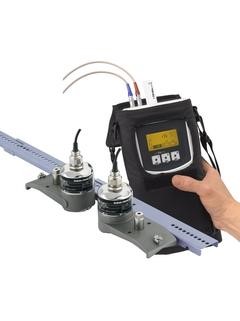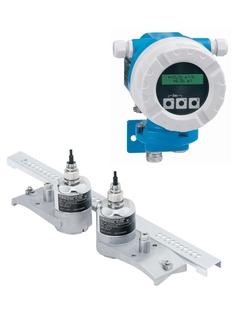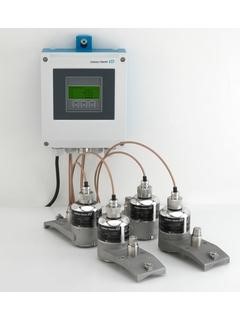Using ultrasonic waves, the flow volume of a wide variety of gases and liquids can be measured reliably – independent of electrical conductivity, pressure, temperature or viscosity. In applications that require traceable and guaranteed accuracy, inline ultrasonic sensors are preferred for use. Clamp-on ultrasonic sensors, on the other hand, are installed on the outer wall of the pipe and thus also enable temporary measurements or a retrofitting.

Budget-friendly flowmeter with easy data transfer solution via USB stick, no extra software needed.
Predecessor model: Prosonic Flow Clamp On 92TA1
Max. measurement
error
+/-2.0 %
Measuring range
0....452,389 m3/h
Medium
temperature range
DN 15...65
-40...+150°C
(-40...+302°F)
DN 50...300
-40...+170°C
(-40...+338°F)
DN 100...4000
-40...+80°C
(-40...+176°F)
Max. process
pressure
No limit

This ultimate flow meter comes with an auto frequency scan and provides maximum measuring performance and cost-effectivity.
Predecessor model: Prosonic Flow Clamp On 90W, DDU18

Clamp-on flowmeter: flexible, safe, and simple to install for the water and wastewater industries as well as utilities.
Predecessor model: Prosonic Flow Clamp On 93W
Swimming against the flow requires more power and more time than swimming with the flow. This simple fact is the basis for ultrasonic flow measurement according to the “differential transit time” method: This method uses two sensors, set opposite each other in the measuring tube. Each sensor can alternately transmit and receive ultrasonic signals, while simultaneously measuring the signal transit time.
As soon as the fluid in the tube starts to flow, the signals are accelerated in the direction of flow but delayed in the opposite direction. The differential transit time, measured by the two sensors, is directly proportional to the flow rate.